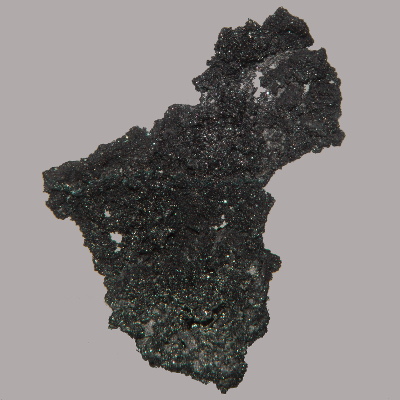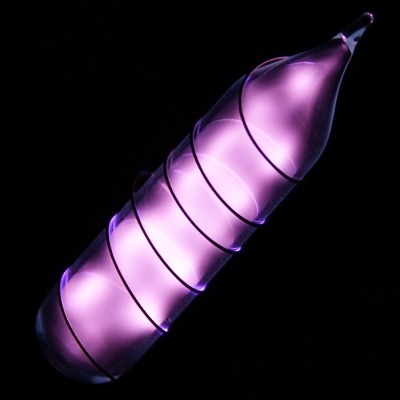Periodic Table Element Comparison: Compare Elements - Boron vs Helium
Compare Boron and Helium on the basis of their properties, attributes and periodic table facts. Compare elements on more than 90 properties. All the elements of similar categories show a lot of similarities and differences in their chemical, atomic, physical properties and uses. These similarities and dissimilarities should be known while we study periodic table elements. You can study the detailed comparison between Boron vs Helium with most reliable information about their properties, attributes, facts, uses etc. You can compare B vs He on more than 90 properties like electronegativity , oxidation state, atomic shells, orbital structure, Electronaffinity, physical states, electrical conductivity and many more. Boron and Helium comparison table on more than 90 properties.
Boron and Helium Comparison
Facts
| Name | Boron | Helium |
|---|---|---|
| Atomic Number | 5 | 2 |
| Atomic Symbol | B | He |
| Atomic Weight | 10.811 | 4.002602 |
| Phase at STP | Solid | Gas |
| Color | Black | Colorless |
| Metallic Classification | Metalloid | Noble Gas |
| Group in Periodic Table | group 13 | group 18 |
| Group Name | boron family | helium family or neon family |
| Period in Periodic Table | period 2 | period 1 |
| Block in Periodic Table | p -block | p -block |
| Electronic Configuration | [He] 2s2 2p1 | 1s2 |
| Electronic Shell Structure (Electrons per shell) | 2, 3 | 2 |
| Melting Point | 2348 K | 0 K |
| Boiling Point | 4273 K | 4.22 K |
| CAS Number | CAS7440-42-8 | CAS7440-59-7 |
| Neighborhood Elements | Neighborhood Elements of Boron | Neighborhood Elements of Helium |
History
| Parameter | Boron | Helium |
|---|---|---|
| History | The element Boron was discovered by L. Gay-Lussac and L.J. Thénard in year 1808 in France and United Kingdom. Boron derived its name from borax, a mineral. | The element Helium was discovered by P. Janssen and N. Lockyer in year 1868 in Sweden and United Kingdom. Helium derived its name from the Greek word helios, meaning 'sun'. |
| Discovery | L. Gay-Lussac and L.J. Thénard (1808) | P. Janssen and N. Lockyer (1868) |
| Isolated | H. Davy (1808) | W. Ramsay,T. Cleve, and N. Langlet (1895) |
Presence: Abundance in Nature and Around Us
Parts per billion (ppb) by weight / by atoms (1ppb =10^-7 %)
| Property | Boron | Helium |
|---|---|---|
| Abundance in Universe | 1 / 0.1 | 230000000 / 72000000 |
| Abundance in Sun | 2 / 0.2 | 230000000 / 74000000 |
| Abundance in Meteorites | 1600 / 3000 | - / - |
| Abundance in Earth's Crust | 8700 / 17000 | 5.5 / 30 |
| Abundance in Oceans | 4440 / 2500 | 0.0072 / 0.011 |
| Abundance in Humans | 700 / 410 | - / - |
Crystal Structure and Atomic Structure
| Property | Boron | Helium |
|---|---|---|
| Atomic Volume | 4.3947 cm3/mol | 22.4136 cm3/mol |
| Atomic Radius | 87 pm | 31 pm |
| Covalent Radius | 82 pm | 32 pm |
| Van der Waals Radius | 192 pm | 140 pm |
Atomic Spectrum - Spectral Lines | ||
| Emission Spectrum | Not available |  |
| Absorption Spectrum |  |  |
| Lattice Constant | 506, 506, 506 pm | 424.2, 424.2, 424.2 pm |
| Lattice Angle | 1.01334, 1.01334, 1.01334 | π/2, π/2, π/2 |
| Space Group Name | R_ 3m | Fm_ 3m |
| Space Group Number | 166 | 225 |
| Crystal Structure | Simple Trigonal 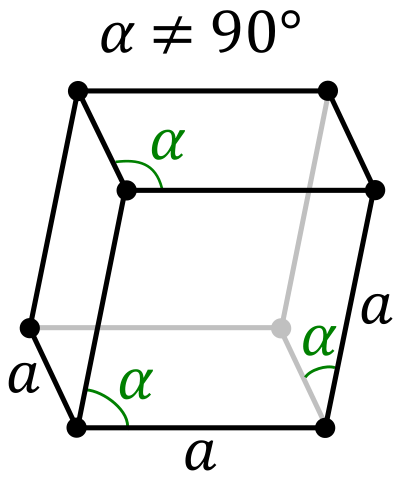 | Face Centered Cubic 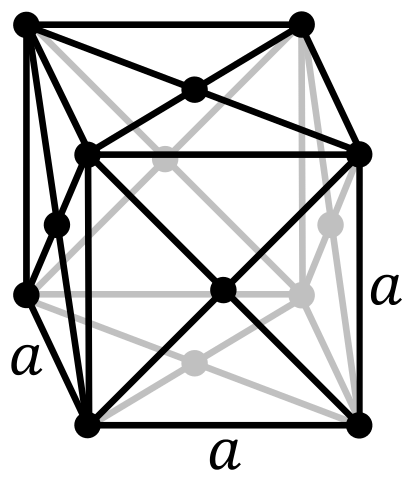 |
Atomic and Orbital Properties
| Property | Boron | Helium |
|---|---|---|
| Atomic Number | 5 | 2 |
| Number of Electrons (with no charge) | 5 | 2 |
| Number of Protons | 5 | 2 |
| Mass Number | 10.811 | 4.002602 |
| Number of Neutrons | 6 | 2 |
| Shell structure (Electrons per energy level) | 2, 3 | 2 |
| Electron Configuration | [He] 2s2 2p1 | 1s2 |
| Valence Electrons | 2s2 2p1 | 1s2 |
| Oxidation State | 3 | - |
| Atomic Term Symbol (Quantum Numbers) | 2P1/2 | 1S0 |
| Shell structure | 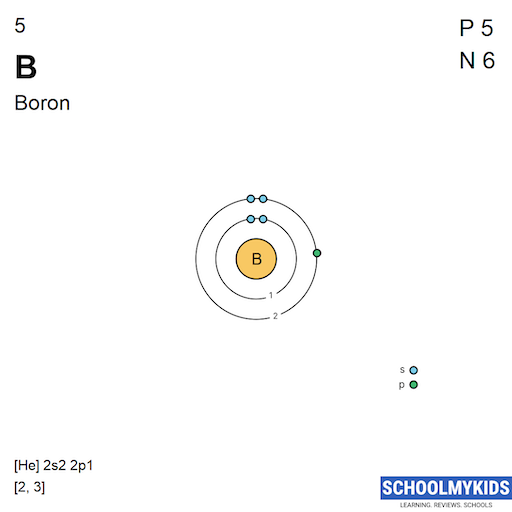 | 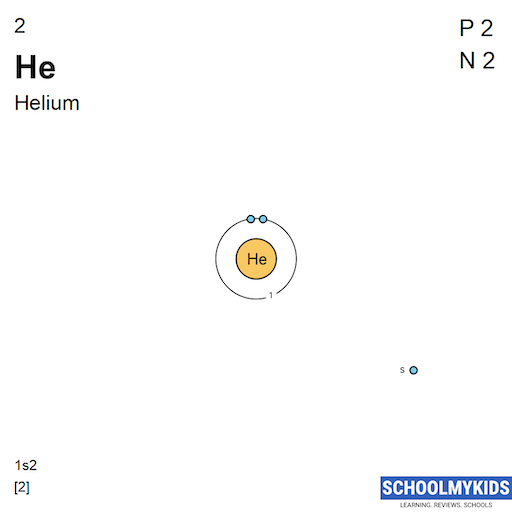 |
Isotopes and Nuclear Properties
Boron has 2 stable naturally occuring isotopes while Helium has 2 stable naturally occuring isotopes.
| Parameter | Boron | Helium |
|---|---|---|
| Known Isotopes | 6B, 7B, 8B, 9B, 10B, 11B, 12B, 13B, 14B, 15B, 16B, 17B, 18B, 19B | 3He, 4He, 5He, 6He, 7He, 8He, 9He, 10He |
| Stable Isotopes | Naturally occurring stable isotopes: 10B, 11B | Naturally occurring stable isotopes: 3He, 4He |
| Neutron Cross Section | 755 | 0.007 |
| Neutron Mass Absorption | 2.4 | 0.00001 |
Chemical Properties: Ionization Energies and electron affinity
| Property | Boron | Helium |
|---|---|---|
| Valence or Valency | 3 | 0 |
| Electronegativity | 2.04 Pauling Scale | - |
| Electron Affinity | 26.7 kJ/mol | 0 kJ/mol |
| Ionization Energies | 1st: 800.6 kJ/mol 2nd: 2427.1 kJ/mol 3rd: 3659.7 kJ/mol 4th: 25025.8 kJ/mol 5th: 32826.7 kJ/mol | 1st: 2372.3 kJ/mol 2nd: 5250.5 kJ/mol |
Physical Properties
| Property | Boron | Helium |
|---|---|---|
| Density | 2.46 g/cm3 | 0.0001785 g/cm3 |
| Molar Volume | 4.3947 cm3/mol | 22.4136 cm3/mol |
Elastic Properties | ||
| Young Modulus | - | - |
| Shear Modulus | - | - |
| Bulk Modulus | 320 GPa | - |
| Poisson Ratio | - | - |
Hardness - Tests to Measure of Hardness of Element | ||
| Mohs Hardness | 9.3 MPa | - |
| Vickers Hardness | 49000 MPa | - |
| Brinell Hardness | - | - |
Electrical Properties | ||
| Electrical Conductivity | 0.0001 S/m | - |
| Resistivity | 10000 m Ω | - |
| Superconducting Point | - | - |
Heat and Conduction Properties | ||
| Thermal Conductivity | 27 W/(m K) | 0.1513 W/(m K) |
| Thermal Expansion | 0.000006 /K | - |
Magnetic Properties | ||
| Magnetic Type | Diamagnetic | Diamagnetic |
| Curie Point | - | - |
| Mass Magnetic Susceptibility | -8.7e-9 m3/kg | -5.9e-9 m3/kg |
| Molar Magnetic Susceptibility | -9.41e-11 m3/mol | -2.36e-11 m3/mol |
| Volume Magnetic Susceptibility | -0.0000214 | -1.05e-9 |
Optical Properties | ||
| Refractive Index | - | 1.000035 |
Acoustic Properties | ||
| Speed of Sound | 16200 m/s | 970 m/s |
Thermal Properties - Enthalpies and thermodynamics
| Property | Boron | Helium |
|---|---|---|
| Melting Point | 2348 K | 0 K |
| Boiling Point | 4273 K | 4.22 K |
| Critical Temperature | - | 5.19 K |
| Superconducting Point | - | - |
Enthalpies | ||
| Heat of Fusion | 50 kJ/mol | 0.02 kJ/mol |
| Heat of Vaporization | 507 kJ/mol | 0.083 kJ/mol |
| Heat of Combustion | - | - |
Regulatory and Health - Health and Safety Parameters and Guidelines
| Parameter | Boron | Helium |
|---|---|---|
| CAS Number | CAS7440-42-8 | CAS7440-59-7 |
| RTECS Number | RTECSED7350000 | RTECSMH6520000 |
| DOT Hazard Class | - | 2.2 |
| DOT Numbers | - | 1963 |
| EU Number | - | - |
| NFPA Fire Rating | 3 | 0 |
| NFPA Health Rating | 2 | 1 |
| NFPA Reactivity Rating | 0 | 0 |
| NFPA Hazards | - | - |
| AutoIgnition Point | - | - |
| Flashpoint | - | - |
Compare With Other Elements
Compare Boron and Helium with other elements of the periodic table.
Compare Boron with all Group 13 elementsCompare Boron with AluminiumCompare Boron with GalliumCompare Boron with IndiumCompare Boron with ThalliumCompare Boron with Nihonium Compare Boron with all Period 2 elementsCompare Boron with LithiumCompare Boron with BerylliumCompare Boron with CarbonCompare Boron with NitrogenCompare Boron with OxygenCompare Boron with FluorineCompare Boron with Neon Compare Boron with all Metalloid elements | Compare Helium with all Group 18 elementsHelium vs Neon ComparisonHelium vs Argon ComparisonHelium vs Krypton ComparisonHelium vs Xenon ComparisonHelium vs Radon ComparisonHelium vs Oganesson Comparison Compare Helium with all Period 1 elementsCompare Helium with all Noble Gas elements |
